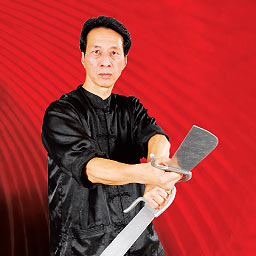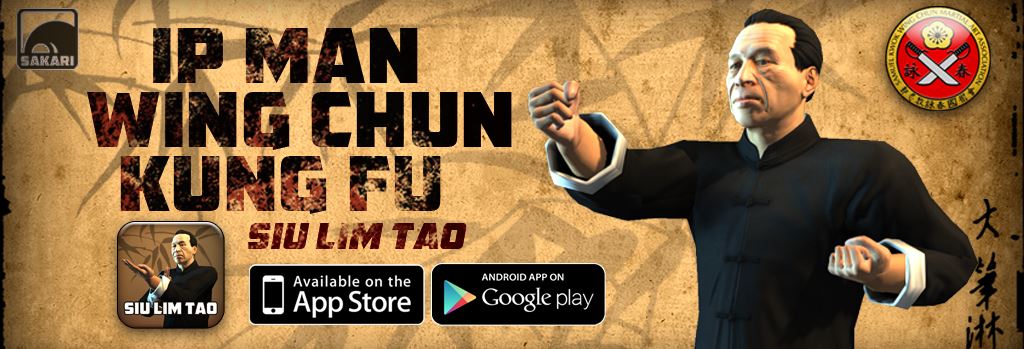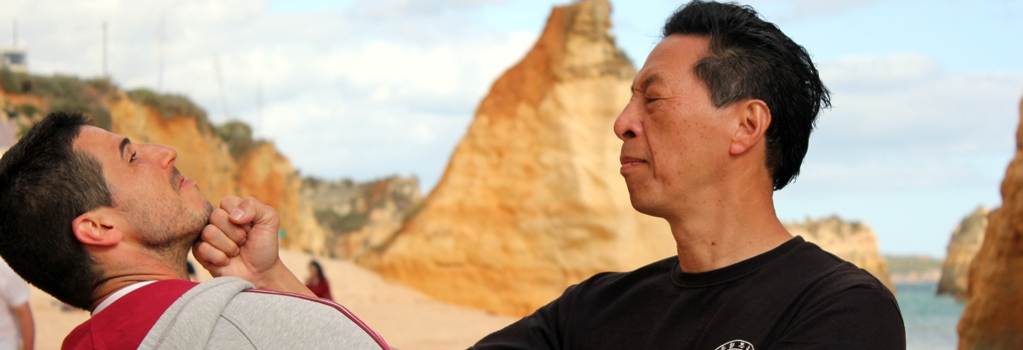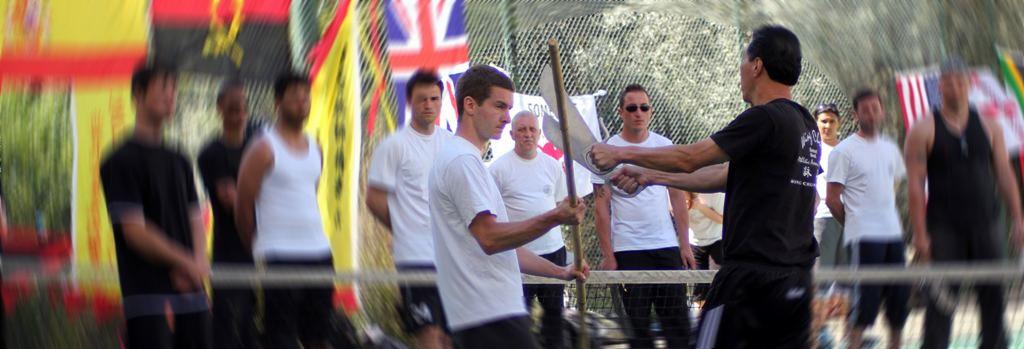Sam Kwok Interview by Blitzmag
Article by Blitz Mag added on 20 Jul 2012. Last updated on 20 Jul 2012.
In the Steps of Yip Man
This interview was by Blitz Mag
Sam Kwok Interview
Grandmaster Samuel Kwok is one of the most recognised kung fu masters today carrying on the legacy of Hong Kong's famous Wing Chun exponents Grandmaster Yip Man and his sons, Grandmasters Yip Chun and Yip Ching. Trained in Hong Kong by the Yip brothers, Kwok is world-renowned due to his many contributions to Wing Chun, including a set of comprehensive instructional DVDs on the system. Here, he gives an account of his history in martial arts and his thoughts on Wing Chun's inner workings.
 Samuel Kwok was born in Hong Kong in 1948, the son of a church minister. His interest in martial arts started at an early age and his first experience was in White Crane kung fu, under the guidance of his uncle, Luk Chi Fu. Kwok's Wing Chun training started in Hong Kong in 1967 under Chan Wai Ling a master of Wing Chun kung fu in the tradition of the system's great warriors. He has established himself as one of the most knowledgeable Wing Chun instructors of our time. His background in the system spans some four decades, in which time he has had the opportunity to train with the world's best. Grandmaster Kwok has been a senior representative of the Ip Man [often also spelled Yip in Western translation] method since the early 1980s. He has the distinction of being trained and being the senior representative of both of Ip Man's sons, Grandmasters Ip Chun and Ip Ching. His performance at the first world Wing Chun conference in 1999 is legendary, as is his demonstration at the grand opening of the Ip Man Museum in Foshan, China. In addition to his extensive training under Ip Chun and Ip Ching, he has also had the opportunity to train under such first-generation masters as Lee Sing, Chu Seung Tien and Wong Shun Leung. The following interview delves further into Kwok's history and his philosophies on kung fu.
Samuel Kwok was born in Hong Kong in 1948, the son of a church minister. His interest in martial arts started at an early age and his first experience was in White Crane kung fu, under the guidance of his uncle, Luk Chi Fu. Kwok's Wing Chun training started in Hong Kong in 1967 under Chan Wai Ling a master of Wing Chun kung fu in the tradition of the system's great warriors. He has established himself as one of the most knowledgeable Wing Chun instructors of our time. His background in the system spans some four decades, in which time he has had the opportunity to train with the world's best. Grandmaster Kwok has been a senior representative of the Ip Man [often also spelled Yip in Western translation] method since the early 1980s. He has the distinction of being trained and being the senior representative of both of Ip Man's sons, Grandmasters Ip Chun and Ip Ching. His performance at the first world Wing Chun conference in 1999 is legendary, as is his demonstration at the grand opening of the Ip Man Museum in Foshan, China. In addition to his extensive training under Ip Chun and Ip Ching, he has also had the opportunity to train under such first-generation masters as Lee Sing, Chu Seung Tien and Wong Shun Leung. The following interview delves further into Kwok's history and his philosophies on kung fu.
How long have you been practicing martial arts and who were your first teachers?
Since I was nine years old. I watched kung fu movies on television until I was about 15 or 16 years old. At that age, I started going to bazaars where refugees came from mainland China and sold a range of Chinese herbal remedies such as dit da jow [used to relieve bruising and swelling]. People demonstrated their kung fu skills in order to sell their wares. I learned a lot from watching these demonstrations. I was introduced to the Wing Chun White Crane, Fuijian style. Master Cheng Man Lung, who was the full-contact fighting champion in Canton during the 1980s, was very powerful because of his dim-mak [pressure-point striking] skill. He trained with a bucket full of granite rocks and his fingers were very short and thick from years of striking his hands into the bucket. My interest in Wing Chun continued in 1968 when a guy who played basketball showed me the Siu Lim Tao [Little Idea] form. However, I was not very impressed by his demonstration of the form. I came to England in 1972 and started learning Wing Chun from Lee Sing, who was a student of Grandmaster Ip Man. Lee Sing was my first Wing Chun teacher and it was he who introduced me to Grandmaster Ip Chun in 1978. I furthered my studies with Grandmaster Ip Chun, who taught me the Wooden Dummy form among all the other Wing Chun forms in great detail. I have invited Grandmaster Ip Chun over to the UK on numerous occasions to conduct seminars. Incidentally, Grandmaster Ip Chun is the most skilful practitioner of chi-sao [sticking-hands] that I have ever seen. In 1992, I brought his brother, Grandmaster Ip Ching, to the UK to conduct seminars. In 1994, I continued my training in Wing Chun under Grandmaster Ip Ching. In 1995, I brought Grandmasters Ip Chun and Ip Ching to Chicago to conduct joint seminars. I have spent many years not only training under the guidance of Grandmaster Ip Man's two sons but also promoting them in the US and Europe.
How many styles kung fu or other methods have you trained in?
I have trained in White Crane kung fu with my uncle, Luk Chi Fu and his son. Luk Chi Fu was one of the greatest lion dancing teachers in Hong Kong. He is a grandmaster of the White Crane style. I trained with my cousin Sifu Luk Chung Mau, when he was teaching in London from 1976 to1978 and also continued my lion dancing studies with him. I decided to teach Ip Man family Wing Chun. Over the years, I have come across a range of different martial arts and believe it is important to have an open-mind when it comes to one's quest for knowledge of martial arts. Various martial artists who have studied with me have exchanged their knowledge of their own arts. I have had people who trained in karate and taekwondo, 4th Dans, train with me. I also became friends with various masters of Thai boxing such as Master Toddy (who is now teaching in Las Vegas), Master Win (we sparred together), Master Woody and Master Krin. I have remained good friends with all of them.
What are the main principles intrinsic to the three empty-hand forms of Wing Chun? Do they interrelate with each other?
The first form, Siu Lim Tao, is the most important as it is comprised of the basic positions and stance. For example, tan-sao, fok-sao [or fook-sao] and the centreline theory. This form focuses on how to train for power and energy. For example, focusing on the thumb while performing tan-sau and the wrist when performing fok-sau. In addition, the first form concentrates on how to develop the correct use of elbow energy. The second part of the form teaches you how to use energy correctly, e.g. the use of 'last moment' energy. The transition from one movement to the other is carried out in a totally relaxed state.
Chum Kiu is the next stage in the development of the Wing Chun style. This form is important in that it focuses on turning and using yu-ma. It involves turning the legs and hips to generate energy, as a whirlpool or spinning top, and to redirect energy away from your centreline. It also teaches you how to 'borrow' the energy from your opponent, who is attacking you. This form helps you concentrate on your defence and includes the use of the bong-sao [wing-arm] movement. This movement is used to defend your centreline. In Chum Kiu you start to move; you use the 'big bow' and bridge the gap with the use of footwork and 'seeking the bridge'. You also train to defend at various angles, e.g. defending against 180-degree attacks from different directions. These movements enable you to cover your centreline when your hands are away from it by using two-hand techniques simultaneously.
Biu Gee [also spelled Bil-Jee], is very important as it trains you in how to recover your centreline in an 'emergency' situation. You train to use two energies going in different directions, you borrow the energy of your opponent and use many elbow techniques. The emergency techniques are used if an opponent is trying to control your elbow. In addition, you utilise your yu-ma turning stance to increase your power for the application of your energy in two directions, e.g. double larp-sao [grabbing-hand] All three Wing Chun forms are related to each other but have their own meaning and purpose. The Siu Lim Tao form teaches you all the basic techniques that are then used in combination in Chum Kiu and Biu Jee. These three forms prepare us for chi-sao, which prepares us for fighting.
What are the most important points in your teaching methods? And what are the most important qualities, for a student to become proficient in the Wing Chun style?
I teach students to have dedication, e.g. don't train one day and leave it for several days. Train often and hard. Use your head Wing Chun is a thinking art. You need to get the students to use their brains to find out why a technique works, to understand the principles and theories, to understand the keys. It is 50 per cent from the sifu and 50 per cent from the student. You must remember that everyone's build/stature is different and so you must adapt your teaching method and the focus of your student. For example, a smaller person has to use more footwork and borrow the other person's energy. Furthermore, I tell my students that it is always good to observe other styles of martial arts. This enables you to observe different techniques and pushes you to think about how you will be able to 'feel' these techniques if applied against you, in a competition for example.
It is very important to emphasise to students that they must endeavour to avoid injuries because if they become injured they will need to take time-off necessary to recover.
I have developed the ability to identify and communicate the 'keys' or the core principles of the Wing Chun style. I also tailor my communication of these keys to the capability of each student, because each student will have their own learning style and cultural background. I encourage all my students to analyse what they have learnt from me, reflect upon their analyses and return to the next training session with a list of questions that will enhance their understanding. In addition, I analyse my teaching sessions, reflect upon the problems that a few students may encounter during the training sessions and design strategies to facilitate a deeper understanding for these students.
In regard to the second part of your question, it is important to encourage a student, especially in chi-sao, to attack after they have a good defence. Again, it is imperative to encourage students to ask relevant questions so that they understand the keys and can transfer that knowledge into their daily training. The use of mirrors is very important as they aid your ability to check the positions. Always go to back to your teacher for corrections and advice. Wing Chun kung fu can be very difficult to learn properly at the beginning and the teacher has a responsibility to teach his students diligently. Students should be open-minded, receptive, analytical, diligent and constantly seeking knowledge. Moreover, they must be loyal and respectful to their sifu. In addition, they should be willing to pass on the true teachings of the Ip Man style.
Check out the next issue of Blitz, on sale 30 January, for part two of this interview. Grandmaster Kwok will discuss different styles of kung fu, kung fu in the West, chi-sao, the weaponry aspects of Wing Chun and more.



